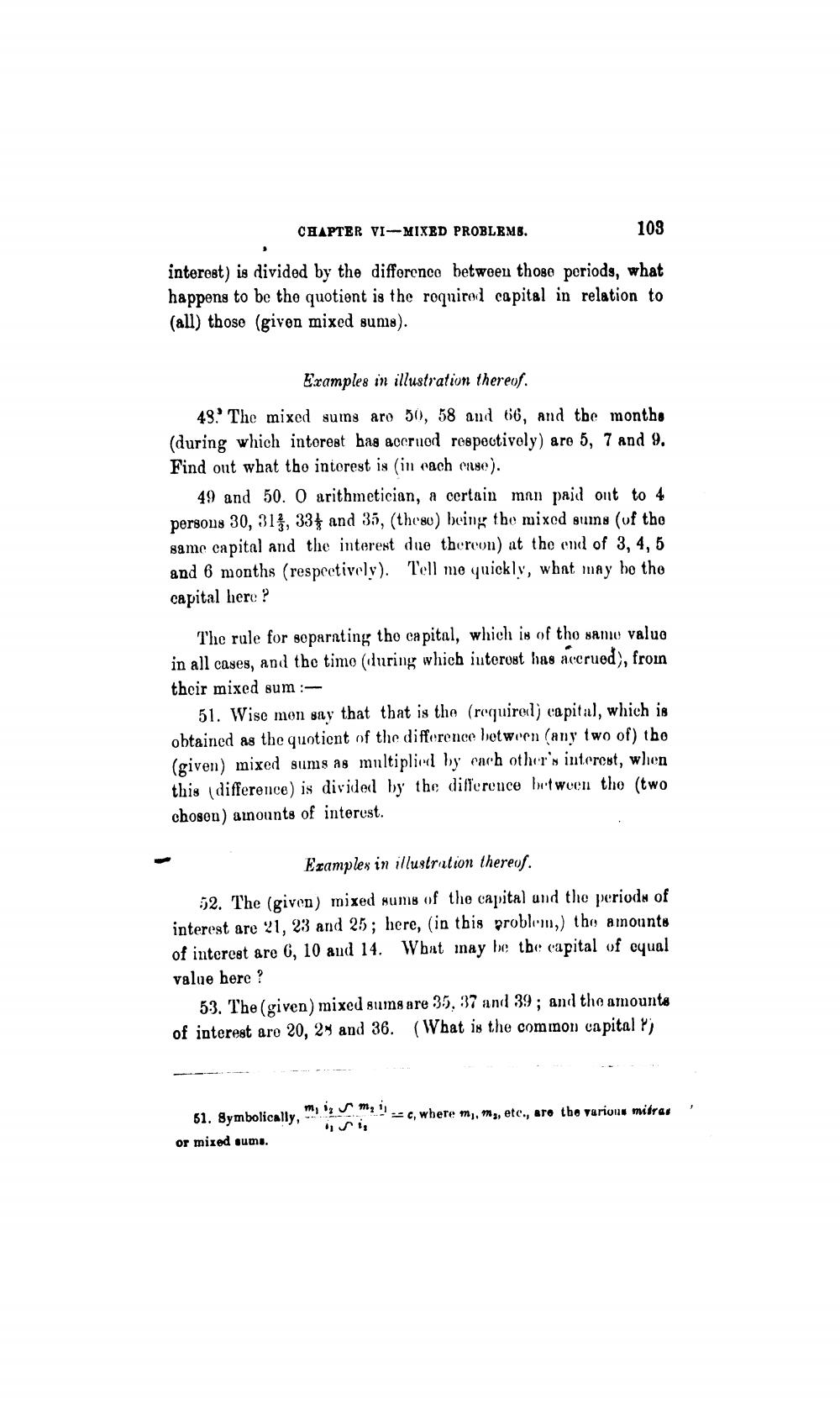________________
103
interest) is divided by the difference between those periods, what happens to be the quotient is the required capital in relation to (all) those (given mixed sums).
CHAPTER VI-MIXED PROBLEMS.
Examples in illustration thereof.
48. The mixed sums aro 50, 58 and 66, and the months (during which interest has accrued respectively) are 5, 7 and 9. Find out what the interest is (in each case).
49 and 50. O arithmetician, a certain man paid out to 4 persons 30, 31, 334 and 35, (these) being the mixed sums (of the same capital and the interest due thereon) at the end of 3, 4, 5 and 6 months (respectively). Tell me quickly, what may be the capital here ?
The rule for separating the capital, which is of the same value in all cases, and the time (during which interest has accrued), from their mixed sum:
51. Wise men say that that is the (required) capital, which is obtained as the quotient of the difference between (any two of) the (given) mixed sums as multiplied by each other's interest, when this (difference) is divided by the difference between the (two chosen) amounts of interest.
Examples in illustration thereof.
52. The (given) mixed sums of the capital and the periods of interest are 21, 23 and 25; here, (in this problem,) the amounts of interest are 6, 10 and 14. What may be the capital of equal value here?
53. The (given) mixed sums are 35, 37 and 39; and the amounts of interest are 20, 28 and 36. (What is the common capital ?)
51. Symbolically,
or mixed sums.
my is my i!-- c, where m,, m,, etc., are the various mitras 4154




